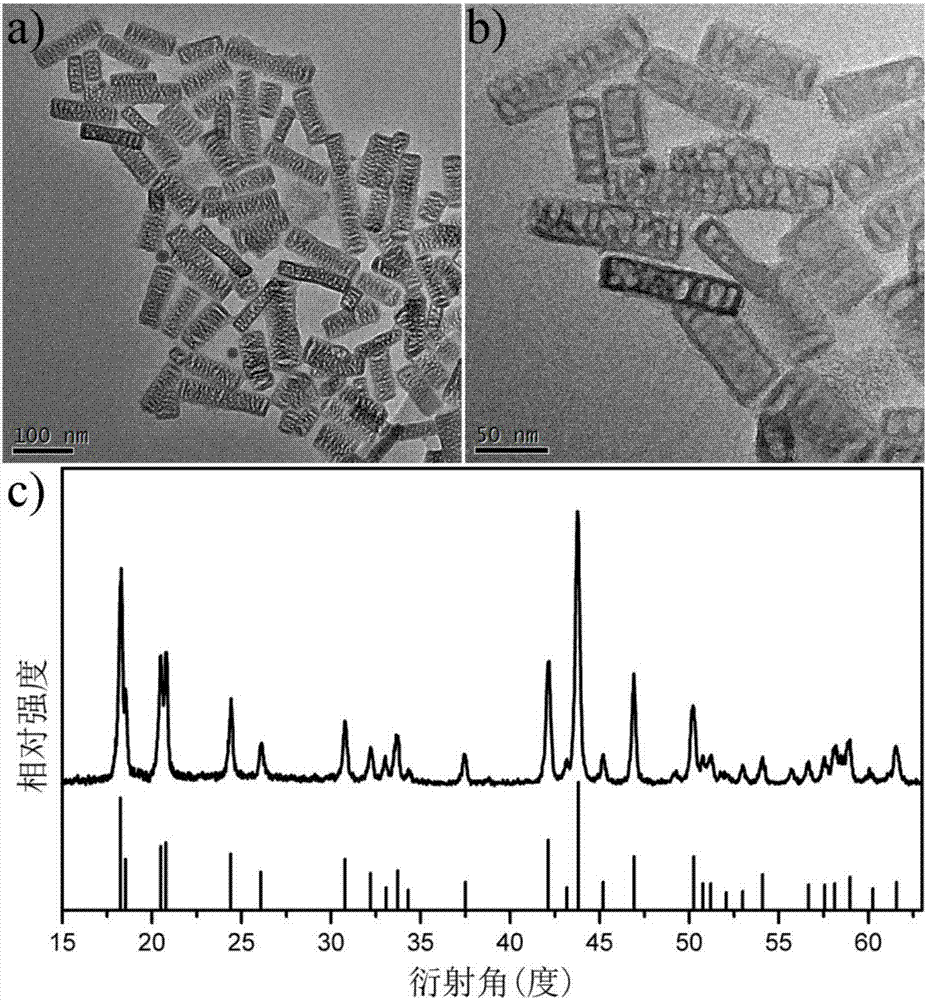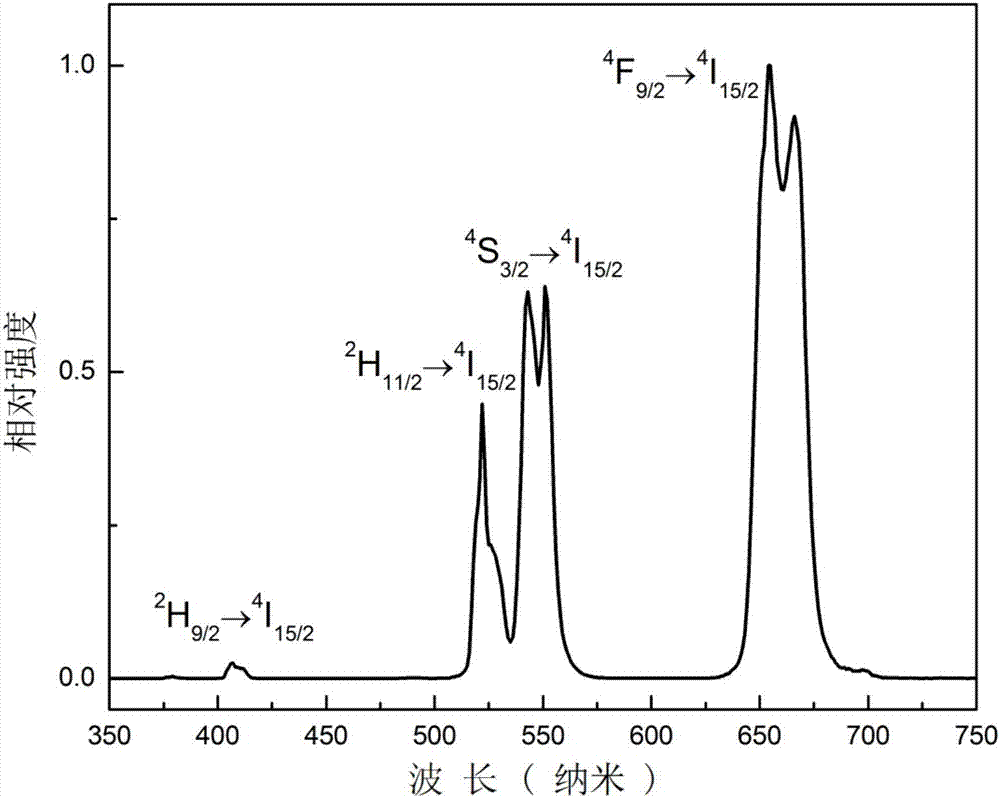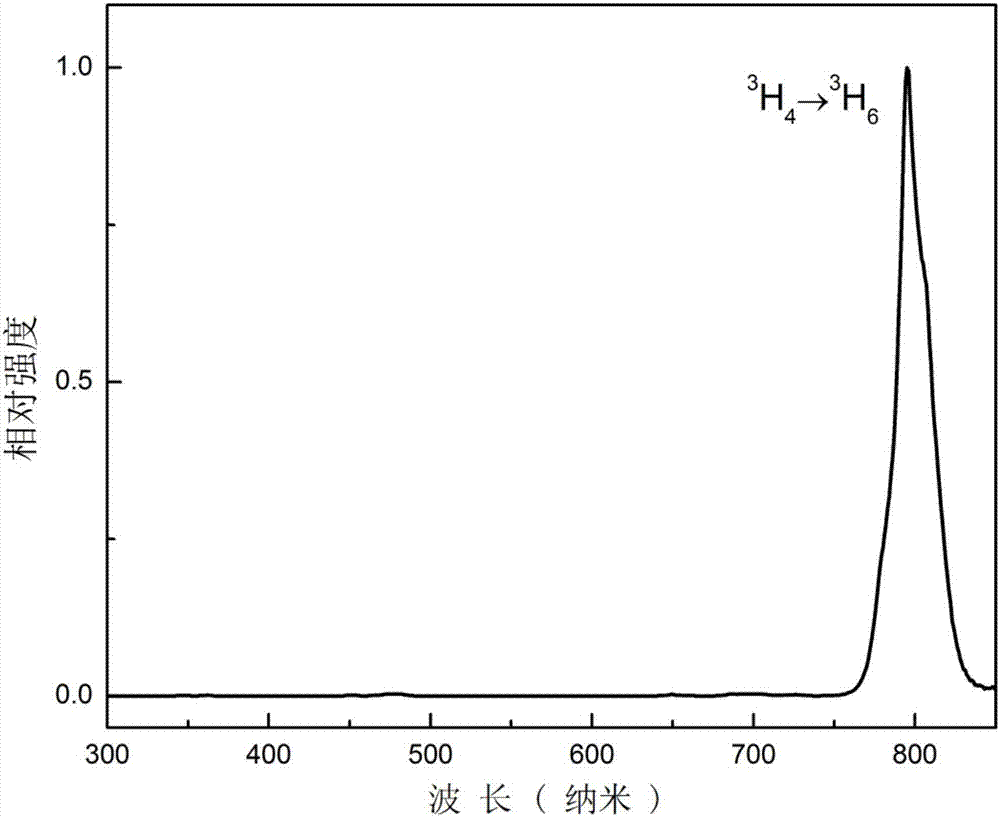Rare-earth-doped Li4ZrF8 nano-luminescence material with porous structure and preparation method and application thereof
A lithium zirconium fluoride and rare earth doping technology, which is applied in the direction of luminescent materials, chemical instruments and methods, can solve the problems of few reports and few studies on alkali metal transition metal fluoride systems, and achieve good repeatability and synthesis conditions Easy to control, huge potential for effects
- Summary
- Abstract
- Description
- Claims
- Application Information
AI Technical Summary
Problems solved by technology
Method used
Image
Examples
Embodiment 1
[0048] Preparation of Li 4 ZrF 8 :20%Yb / 2%Er nano-luminescent material
[0049] Weigh 0.084g of lithium hydroxide, 624μL of zirconium acetate, 0.0035g of erbium acetate and 0.0423g of ytterbium acetate into a 100mL three-neck flask at room temperature, add 12mL of oleic acid and 16mL of octadecene, and stir to mix evenly. Under the protection of nitrogen flow, the above mixture was heated to 150°C and kept at this temperature for 60 minutes to completely dissolve the zirconium acetate and rare earth acetate to obtain a transparent and clear solution. After cooling to room temperature, 10 ml of methanol solution in which 0.1112 g of ammonium fluoride was dissolved was added dropwise, stirred and allowed to react at room temperature for 30 minutes. Then the mixed solution was heated to 50° C. and kept for 30 minutes to remove methanol in the reaction system. After the methanol was removed, the reaction system was heated to 280°C under the protection of nitrogen flow, kept at ...
Embodiment 2
[0055] Preparation of Li 4 ZrF 8 :20%Yb / 2%Tm nano-luminescent material
[0056] Weigh 0.084g of lithium hydroxide, 624μL of zirconium acetate, 0.0036g of thulium acetate and 0.0423g of ytterbium acetate into a 100mL three-neck flask at room temperature, add 12mL of oleic acid and 16mL of octadecene, and stir to mix evenly. Under the protection of nitrogen flow, the above mixture was heated to 150°C and kept at this temperature for 60 minutes to completely dissolve the zirconium acetate and rare earth acetate to obtain a transparent and clear solution. After cooling to room temperature, 10 mL of methanol solution in which 0.1112 g of ammonium fluoride was dissolved was added dropwise, stirred and allowed to react at room temperature for 30 minutes. Then the mixed solution was heated to 50° C. and kept for 30 minutes to remove methanol in the reaction system. After the methanol was removed, the reaction system was heated to 280°C under the protection of nitrogen flow, kept at...
Embodiment 3
[0059] Preparation of Li 4 ZrF 8 :20%Yb / 2%Ho nano-luminescent material
[0060] Weigh 0.084g of lithium hydroxide, 624μL of zirconium acetate, 0.0034g of holmium acetate and 0.0423g of ytterbium acetate into a 100mL three-necked flask at room temperature, add 12mL of oleic acid and 16mL of octadecene, and stir to mix evenly. Under the protection of nitrogen flow, the above mixture was heated to 150°C and kept at this temperature for 60 minutes to completely dissolve the zirconium acetate and rare earth acetate to obtain a transparent and clear solution. After cooling to room temperature, 10 ml of methanol solution in which 0.1112 g of ammonium fluoride was dissolved was added dropwise, stirred and allowed to react at room temperature for 30 minutes. Then the mixed solution was heated to 50° C. and kept for 30 minutes to remove methanol in the reaction system. After the methanol was removed, the reaction system was heated to 280°C under the protection of nitrogen flow, kept ...
PUM
| Property | Measurement | Unit |
|---|---|---|
| particle diameter | aaaaa | aaaaa |
| specific surface area | aaaaa | aaaaa |
| pore size | aaaaa | aaaaa |
Abstract
Description
Claims
Application Information
 Login to View More
Login to View More - R&D
- Intellectual Property
- Life Sciences
- Materials
- Tech Scout
- Unparalleled Data Quality
- Higher Quality Content
- 60% Fewer Hallucinations
Browse by: Latest US Patents, China's latest patents, Technical Efficacy Thesaurus, Application Domain, Technology Topic, Popular Technical Reports.
© 2025 PatSnap. All rights reserved.Legal|Privacy policy|Modern Slavery Act Transparency Statement|Sitemap|About US| Contact US: help@patsnap.com



